Judy Canova: The Queen of Hillbilly Hokum
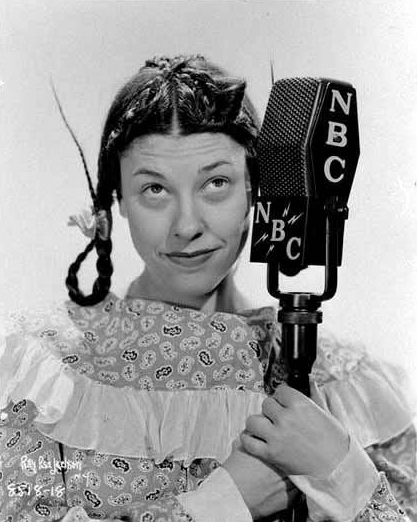
When she was a kid, Judy Canova once wrote that she wasn't a happy child. The only thing that could take her mind off herself and her personal unhappiness was music. Born Julietta, she started singing popular songs on a Jacksonville, Florida, radio station together with her brother Zeke and her sister Anne when she was just 12. When she sang she would forget her troubles.
Although her mother took her three children to the Carolina hills for the summer, Canova stayed inside her cabin unhappy and sober-faced. She used to listen to the mournfully amusing sound of the native hill people. She had forgotten how to laugh, but found herself chuckling at the nasal twang of the voices, the funny words, the odd pronunciations -- the song lore of the hillbilly! In the weeks there in those Carolina hills, she committed to memory every song she heard, every nasal twang, every oddity of pronunciation. It became her idea to do a routine with this hillbilly music in it.
In 1933 the three singing Canovas headed for the bright lights of New York. The Village Barn advertised for a hillbilly act, and the Canovas dragged out Judy's mountain soungs, bought some calico and got the job. The honest laughter of those nightly packed houses paid off. After the Barn, a 70-week RKO vaudeville tour, an audition and contract for the Rudy Vallee program in 1933, a chance at an important stage show, Calling All Stars, in 1934 with Gertrude Niesen, more radio, her first Broadway review The Ziegfield Follies of 1936, and then Hollywood.
Her big break in Hollywood was a bit part without billing in In Caliente. Wini Shaw, a popular singer of the day, was to sing "The Lady in Red" in a nightclub scene, and one of the most beautiful and extravagant production numbers had been created by producer Busby Berkeley. Just as it ended, from behind a pillar Canova appeared in a costume resembling Wini Shaw's. The moment she opened her mouth to sing all the effect created by the original performance was destroyed. The audience howled. Canova immediately got other parts suited to her hillbilly hokum. Few knew that the absurd voice she used to butcher songs with had been trained for classical singing.
In the summer of 1943 she landed her own radio show for the Colgate-Palmolive-Peet Company. She surrounded herself with a complement of comedians in a program which depicted a socially aspiring "unacceptable" and her snooty neighbors. Ruby Dandridge was boisterously blithe and giggly Geranium, Canova's maid and cook; Hans Conreid was Canova's house guest Mr. Hemingway, a rather grouchy character; Verna Felton was her friend Miz Pierce; Sheldon Leonard played Joe Crunchmiller, Judy's Brooklynese boyfriend; while the Sportmen Quartet, Gale Gordon, Elvia Allman, Mel Blanc, and others completed the cast. Blanc was the character Pedro. His expression, "Pardon me for talking in your face, seniorita," became a household remark during the '40s. Another character introduced on the Judy Canova Show was her Cousin Ureenus who used to eat chopped liver ice cream. On signing off, Canova would sing the popular song, "Goodnight Sweetheart."
It was noted that few Americans had much contact with real hillbilly humor, but through radio's facsimile, millions of them giggled at the leading lady of pseudohillbilly comedians as she delivered ripe corn in a deep southern drawl. Her flair for reading corn in a raucous drawling voice made her one of radio's favorite personalities. Canova appeared in a number of films and was a recording artist for RCA -- and originated the pigtail fad which swept the country's campuses.
Variety credits Canova's appearance in 1939 as the first hillbilly act ever to appear on television. She formed her own TV production company in 1957 but was rarely seen on that medium, with the exception of some guest appearances on the Huckleberry Finn Show in the late '50s. She also made an occasional rodeo appearance after retiring from radio.
Reid G. Hansen in Return With Us Now, September 1983
Feet First Into Fame: Red Skelton
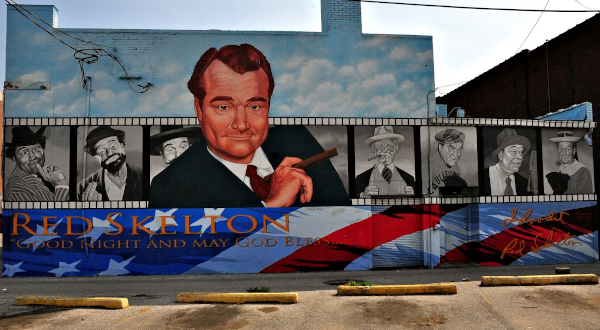
Some people think J. Edgar Hoover ought to nab Red Skelton before he completely sabotages the FBI's crime-doesn't-pay drive. When the average fellow "puts his foot in it," that's his misfortune. But when this human electron puts his foot in it, fame and fortune come his way. Even Lady Luck has to smile.
Skelton gets a fourfold chance at blundering around in his current radio program. He's not only the headliner in Red Skelton and Company, but he's also three separate blitzes in the "And Company" tag, luring behind the character names of Clem, Deadeye and Junior.
His actual supporting cast is of stellar caliber in its own right. Bandleader Ozzie Nelson and singer Harriet Hilliard have long been able to set an audience humming.
When Red Skelton and Company hit the air, the folks set their teeth, hang on to their hats, and get ready to zoom about on the lunatic fringe. Skelton doesn't think much of the slow and peaceful life.
He's never really grown up, from the time he was a bad little boy back in Indiana. When he managed to fall out of his crib at the tender age -- even for Skelton -- of one week, his mother pulled out her first gray hairs and wondered if either of them would survive. Later on, school didn't interest him -- listening to teachers was no fun. So at 10 he ran away to join a medicine show where he could do the talking. That's where he developed his fancy footwork, dodging around the wagon with the truant officer lumbering after him.
Soon the prairie grass grew too long under his feet, so he shook 'em loose, packed up his liniment and ukulele and set out to disrupt a wider area by touring with stock companies and minstrel shows. He wasn't really getting anywhere, however, until he met the present Mrs. Skelton.
Unlike most wives, Edna Skelton didn't want to reform him, but wrote skits (as she still does) which made him more of a blight on the world than ever. Between them, they smashed a road to success for Skelton, even storming Hollywood.
Skelton's not the whole company, though he's four parts of it. He's hounded into many an iniquity by his chief stooge and heckler, former shoe shine boy Wonderful Smith. Wonderful is the real name of this big, good-natured Arkansas-born comedian who made his first big-time success in Duke Ellington's show in Los Angeles, with his skit of a rookie soldier calling President Roosevelt to tell him his problems.
Bandleader Ozzie Nelson and his singing wife, Harriet Hilliard, represent peace and sanity on the program. Ozzie brings to it both eastern culture and a touch of nobility, for he's the Jersey City-born descendant of a titled Swedish grandfather. A four-letter athlete at Rutgers, he worked his way through law school leading an orchestra and then decided to make music his career. Iowa-born Harriet Hilliard was wheeled on the stage by her actress mother before she could even walk and has been entertaining ever since.
For two years now, Mr. and Mrs. Nelson have been trying to keep Skelton from being such a ba-a-d boy. Luckily for listeners, they haven't succeeded.
From Tune In, November 1943; photo by John Lee Kirn, 2014
The Night Orson Welles Thought He Wrecked His Career
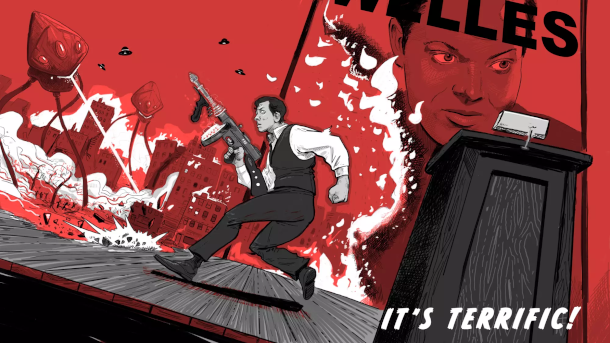
While Orson Welles was broadcasting the Mercury Theater production of The War of the Worlds, he didn't have the slightest notion that he was frightening hundreds of people into conniption fits. It was only when he emerged from the studio, to find the building surrounded by police cars, blue-coats swarming through the corridors and brandishing their nightsticks, and irate CBS officials on the verge of apoplexy, that he realized the enormity of his Halloween broadcast.
Then he thought, along with many of his listeners, that the end of the world had come. The only difference was that it seemed to be the end of his own little private world of phenomenal success at the age of 23.
The morning after the broadcast, after a night which -- if you looked at his unshaven, worried face -- had obviously been sleepless, he turned up at CBS to make abject apologies to reporters, cameramen, and newsreel photographers. He was still sure he'd ruined himself. "If I'd planned to wreck my career," he told everyone who looked sympathetic, and some who didn't, "I couldn't have gone about it better."
But the wreck of his career turned out instead to be a nice fat contract for himself and the Mercury Theater troupe -- a contract with Campbell's Soups at a reported salary of $7,500 a week. If he'd planned to put himself right into the big money, he couldn't have succeeded more gloriously.
That's one unforeseen result of the most talked-of broadcast of this or many years. But there were other results just as unexpected. In fact, if you can make one statement about that famous program, it is this: All of its results were exactly the opposite of what everyone thought they'd be. And since everyone thought the results would be bad, the strange fact gradually emerges that the scare was a pretty healthy thing for all concerned, after all.
Take what it's done for the young genius who was the central figure in all the commotion -- Orson Welles.
Up until the night of October 30, you could have mentioned his name anywhere in the United States except New York without drawing a spark of interest from nine out of every 10 people. The tenth person might have known that he had something to do with a Sunday-night radio program.
Yet for the last four years Welles has been an important radio actor. He's sent cold shivers up and down your back many a time if you've ever listened to The Shadow programs, in which he played the title role until this season. You've heard him acting in the March of Tme and many another commercial show. You've even heard him reading poetry in the pauses between a lady announcer's cooking recipes. But that wasn't the sort of thing that would make a dent in the public's consciousness. Radio actors, unless they hire high-powered press agents, don't become famous.
On Broadway, he was well-known, all right. He's been the Main Stem's wonder boy ever since he produced a Federal Theater version of Shakespeare's Macbeth with a cast of black actors. He followed this up with another Federal Theater hit or two, then branched out to become director, star, stage manager, scenic designer and general handyman for his own Mercury Theater. But Broadway isn't America, and it's doubtful if all his excellent work on the New York stage would have ever made him matter much to the rest of the country.
And then -- an accident, an innocent mistake, a blunder ... and everybody in the country knew who he was. Overnight, the attention of 12 million people was focused on this young man, as it would never have been if he'd just gone on producing and starring in good radio shows and plays.
Norton Russell in Radio Mirror, February 1939
Was Nathan B. Stubblefield the Father of Broadcasting?
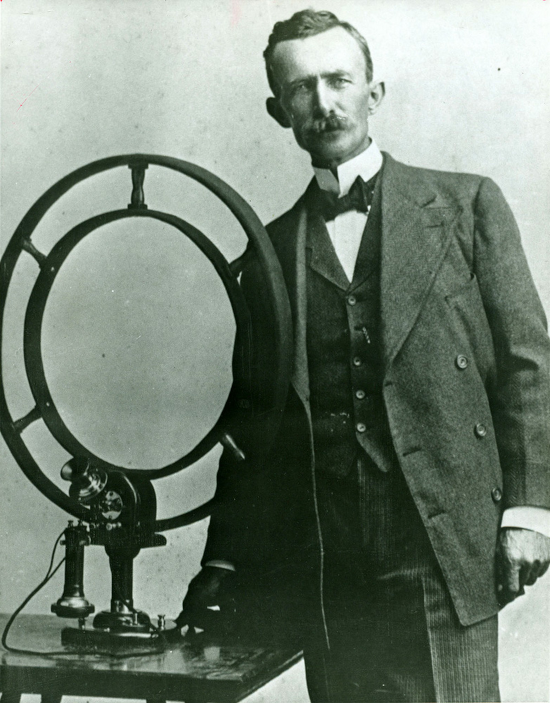
Patriotic Kentuckians have sent us a state magazine with an interesting account of the scarcely recognized work of Nathan B. Stubblefield, who, it is claimed, is the real father of broadcasting.
Stubblefield died a lonely hermit in a desolate hut near Murray, Kentucky, two years ago. A memorial was recently dedicated to him there with the inscription, "the first man in history to transmit and receive the human voice without the use of intervening wires." Professor L. J. Horton of Kentucky State Teachers College personally remembers a demonstration by Stubblefield before a thousand local citizens on January 1, 1902. Another demonstration before a thousand local citizens took place on March 30, 1902, from the steamer Bartholdi on the Potomac River.
R. P. Clarkson, in the New York Sun, does not take this claim seriously. He says there had been a number of occasions previous when the voice was transmitted through space and cites one as that of A. F. Collins, now living a little way up the Hudson, who successfully transmitted the voice before 1900.
A Chicago newspaper recently reprinted an article it had published in the 1860s wherein it was stated that the time was not too far distant when people on the mountains of the Pacific coast would be able to talk through space to the people on the mountains of the Atlantic coast.
All of this is of interest because it shows that radio of today was born not by accident nor by the thought of one mind, but by independent thought of many minds in all the civilized world. Every little improvement has come as the result of distilled thought from many minds. Probably the greatest improvement of all will be the perfected Radio-Vision, the focus point of the greatest amount of scientific research along radio lines today.
From Radio Digest, June 1930
Sheldon Keck the Art Detective
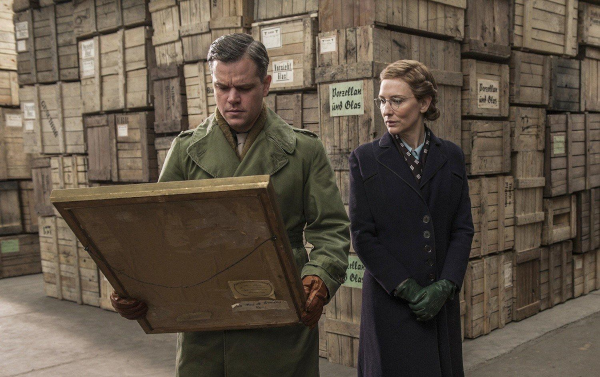
Several hundred years ago, a French painter, who was unsuccessful in selling his own works, hit upon the idea of imitating one of the masters, forging his name, and disposing it as an original. Since then, countless copyists have produced works of art ostensibly by Gainesborough, Van Dyck, da Vinci, Titian, Corot, Rubens, and Rembrandt, to name a few of the greatest. Private collectors and museums, for years, fell prey to these canvas counterfeiters until science stepped in.
Today, thanks to streamlined methods and equipment, we have the art detective. His tools are his vast expert knowledge of painting, ultraviolet, infrared, and X-rays, chemicals and the microscope. Yet, despite his keen observation and analysis, skepticism sometimes persists.
For instance, when a painter was recently accused of having forged a Picasso in Paris, police were reluctant to make the arrest even after the buyer had hired a gumshoe from the gallery of the Louvre. It was only when Picasso himself identified it as a fake that the hoax was exposed, and the painter-perpetrator arrested.
Perhaps the most notorious pigment forget was Hans van Meegeren, a Dutch magazine illustrator, who imitated the masters so successfully that he amassed a $5 million fortune. Most likely, he would still be engaged in a brisk trade if he hadn't been arrested and tried, a few years ago, for Nazi collaboration during the war.
To deny the charge, van Meegeren insisted that a Pieter de Hooches landscape he had sold to Herman Goering for a quarter million dollars was a fake. Judge and jury delayed the verdict until the canvas was examined in the courtroom. Even when it was pronounced a fraud by experts, the jury debated, until the judge instructed them to bring in a verdict of not guilty.
How do these art detectives operate? The Brooklyn Museum not so long ago submitted an alleged landscape by the 17th century Dutch artist Hobbema to Sheldon Keck, one of the country's foremost authorities. After close scrutiny, Keck kicked. The wormholes in the frame were as phony as the painting, whose blue paint, microchemical study revealed, contained Prussian blue. Keck knew that Prussian blue was not used until many years after the artist's death. Moreover, crackles allegedly caused by age were actually painted.
From Gang Busters 34, June-July 1953
Escape With Us Now -- To the Bookstore
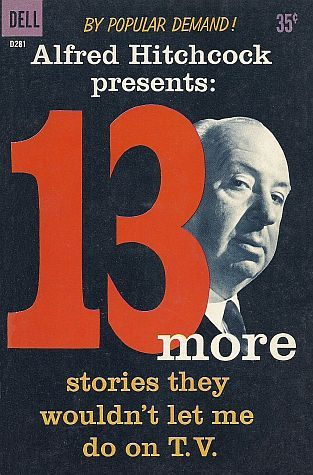
In the seven years that Escape was on the air, over 200 broadcasts were made. If, in retrospect, the years 1947 through 1954 were some of radio's best years, this body of Escape programs is one very good reason why.
I think that one of Escape's strengths was in the careful selection of material on which writers based their scripts. Many of the shows, especially in the '40s, were adapted from outstanding works by American and British authors. Great stories, put into radio play form by talented writers, proved to be an unbeatable formula. No show, not even Suspense, was as consistently exciting and entertaining as Escape.
I thought it would be interesting to dig through the fiction in my basement and see how many of the progenitors of the old Escape shows I could find. I followed this up with a trip to the Waldenbooks and B. Dalton bookstores in the Aurora Mall, and can now recommend several books one might turn to to find some of the tales of adventure immortalized on Escape. The advantage in doing so is the inevitable discovery of stories which were not turned into radio dramas, but nevertheless provide top-notch plots and exciting locales to which the old time radio buff can once more Escape.
In 12 Stories They Wouldn't Let Me Do on TV, Alfred Hitchcock supplies us with "How Love Came to Professor Guildea" by Robert S. Hichens, and "Casting the Runes" by Montague R. James. Both are entertaining stories of the supernatural, and in the '50s the latter was made into an engrossing movie, whose title I now forget, starring Cornell Wilde. Another Hitchcock collection, 13 More Stories They Wouldn't Let Me Do on TV, contains "The Most Dangerous Game" by Richard Connell. This unusual story of hunter and hunted had already been made into a movie in 1932 (being shot at the same time as King Kong, on the same set, and with some of the same actors), and adapted for radio by Arch Oboler during the war years before ever coming to Escape. The movie was remade in 1946 as Game of Death, and in 1956 as Run for the Sun. It is obviously a worthy piece of fiction. The anthology Masterpieces of Adventure, edited by Louis Morris, also contains the story, plus another selection which inspired one of the most famous of all Escape shows, "Leinengen Versus the Ants" by Carl Stephenson.
"An Occurrence at Owl Creek Bridge," which translated into an exceptional drama, even for Escape, can be found in Ghost and Horror Stories of Ambrose Bierce, published by Dover, and I also found it in another collection of Bierce's stories in a Waldenbooks store. She, by H. Rider Haggard, was the author's second, and perhaps most outstanding novel, but many of its fascinating details and plot devices were left out of the 30-minute radio version. The book is readily available in a Ballantine paperback, and I highly recommend it. This story also appeared on the silver screen, twice.
"The Open Boat" by Stephen Crane is included in a Signet Classic The Red Badge of Courage and Other Stories, and the highly enjoyable "A Diamond as Big as the Ritz" is in Babylon Revisited and Other Stories by F. Scott Fitzgerald. I also found "Typhoon" in Great Short Works of Joseph Conrad, a Perennial Classic. "The Fall of the House of Usher" is often included in collections of Edgar Allen Poe's stories, and there are many of these. The Time Machine by H.G. Wells is likewise easy to come by.
All of the above stories were done on Escape at least once, and all books listed are paperbacks still available through the publishers, if not directly off the bookstore shelves. I've recently purchased two hardbacks from B. Dalton which contain reprints of stories from London magazine of the late 18th and early 19th centuries, including all the original illustrations. At $6 apiece, I considered them to be a rather good buy.
The first of the two, Rivals of Sherlock Holmes, edited by Alan K. Russell, should not be confused with a paperback by the same title edited by Hugh Greene. The Russell book contains a completely different collection of stories, including "The Story of the Lost Special" by Sir Arthur Conan Doyle himself. Sherlock Holmes does not appear in the story, nor in any of the other three Conan Doyle stories included in this collection. Still, having read "The Lost Special," I cannot help but feel that the services of London's greatest detective were sorely missed by Scotland Yard.
The Collector's Book of Science Fiction by H.G. Wells is a bonanza, containing "The Country of the Blind," which was done three times on Escape, and "The Man Who Could Work Miracles," which was done twice. Also included is a novel whose title should be somewhat familiar to old time radio fans -- The War of the Worlds.
As you see, Escape's sources for stories were somewhat varied, but always excellent -- just witness the number of them that attracted the attention of Hollywood script writers. I hope you'll soon be reading your way through some of the above mentioned books, and pausing now and then to say, "Ah, but wouldn't this have been a great story for Escape!"
Daniel Daugherty in Return With Us Now, January 1979
Rudy Vallee's NBC Questionnaire
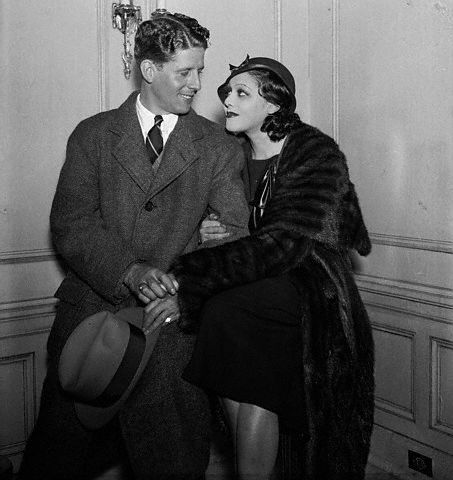
The document rests in the files of the press department of the National Broadcasting Company. It is a questionnaire, duplicates of which are submitted to all NBC stars of prominence. The questionnaire was answered by Vallee himself, painstakingly and neatly typed by his own musical fingers. The questions were answered in 1932, after the crooner's marriage.
Name (professional): Rudy Vallee
Nickname (in the studios): Rudy
Addresses: Office 111 West 57th St., phone Cir 7-4680; home 55 Central P West.
Do you have an NBC contract? Yes, with George Engles
Manager: None
Personal press agent: None
Talent (contribution to radio -- what do you do): Direct an orchestra and sing popular songs.
Your current programs: Fleischmann's Yeast Hour, Thursday from 8 to 9 pm Eastern daylight time
Height: 6 feet
Weight: 150 pounds
Complexion: Light
Hair: Brown
Where and when born: Island Pond, Vermont; July 28, 1901
Parents (Who were they? Did their leanings or characteristics have any bearing on your radio success? Were they talented?): Kathryn Lynch Vallee -- amateurishly musical -- sang a bit and played a little violin. Charles Alphonse Vallee -- was musical but never used his ability. Managed a theater as a sideline.
Are other members of your family musically or dramatically inclined? Kathleen Vallee Lenneville (sister) plays piano and organ -- and teaches piano.
Marital status (wife or husband's name): Fay Webb Vallee
Children (names and ages): None
Radio history (first audition): No audition. First broadcast was from Heigh Ho Club in February 1928, directing seven piece orchestra as nightclub broadcast.
First professional engagement (Any special circumstances? Anecdotes? Humorous incidents? Saxophone soloist at Strand Theater, Portland, Maine -- 1921. Had been head usher at same theater only two years previously. Chief electrician in the theater had given me my first alto sax. Rudy Wiedoeft was my idol -- his records showed me solo possibilities and I had begun studying solos assiduously. I had not learned the solo well enough for his appearance, and that nervousness of hands made me skip whole measures. The audience seemed to like it though.
Rudy Vallee in Radio Guide, June 23, 1934
Top 10 Articles
- The Marriage of Don Ameche and Honore Prendergast
- The Night Arthur Godfrey Fired a Singer On Live Radio
- Early Radio Announcers Invented Their Profession in the 1920s
- The Mythical Town of East Tincup, Colorado
- The Earliest Radio Shows of the 1920s
- The Great Radio Detectives of the 1950s
- The Home Life of Jack Benny
- Why Vladimir Horowitz Stopped Performing in the 1930s
- Judy Canova: The Queen of Hillbilly Hokum
- Some of the Unsung Heroes of Radio

